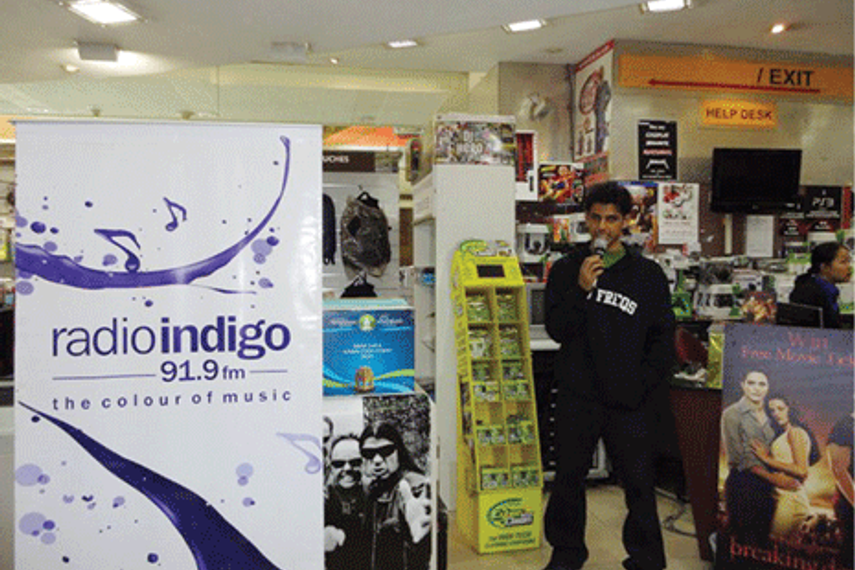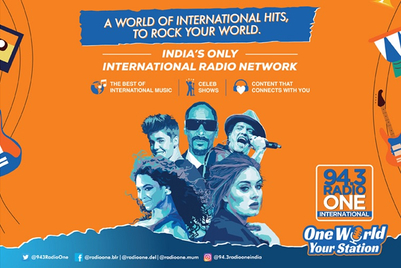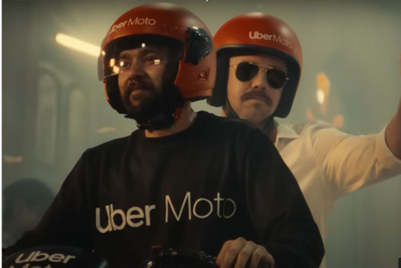
From 2002 to 2006, there was only one English radio channel in India, namely Go (92.5 MHz), (owned by Radio Mid-Day) and it operated only in Mumbai. In June 2006, the channel transformed into Radio One (94.3 MHz), after a joint venture between Mid-Day Multimedia and BBC Worldwide. While the channel expanded to seven metro areas, it was no more an all English radio station.
Come September 2006, and there were two new English radio channels; HIT FM (95 MHz) in New Delhi, and Radio Indigo (91.9 MHz) in Bengaluru and Goa. In 2008, Chennai got its own in Chennai Live (104.8 MHz). Starting February 2012, Radio One (94.3 MHz) started offering English content in New Delhi and Mumbai. (The station however declined from being a part of this story because they feel they are more “international” than just English).
1. While there’s a host of Hindi radio channels that offer slots for English content within their programming line-up, these English radio channels have helped the advertisers to profile their audience. Prem Kumar, COO, Chennai Live, says, “ With English radio channels, the premium advertisers get a chance to reach out to an upmarket audience.” Sanjay Prabhu, MD, Radio Indigo, adds, “Our advertiser base includes premium cars like BMW, Audi, and Mercedes; upper-end apartment and villas’ dealers, and brands like Apple. 50 % of our advertisers are retailers (in Bengaluru) and they keep coming back.” Kumar adds a few lifestyle and hospitality brands to the list and states that 15% of these brands advertise exclusively with their station in Chennai.
2. In addition to traditional advertising, Prabhu lists associating with brands for organising international gigs as a strong revenue source that has reaped them 20-22% profits on an average. But Chennai Live’s Kumar explains, “Events are not usually sold off separately. Instead, the valuation for the brand goes against ad secondages on air.” Kumar adds that there’s a decent opportunity to explore new revenue models. To this, Dinesh Rathore, vice president, MediaVest Worldwide, Mumbai, says, “There could be certain categories that English radio channels can tap, to expand their advertisers’ base, viz. English entertainment channels and English movie channels..”
3. Listing the challenges that English radio channels face, Kumar mentions, “Radio channels have spoilt the market in order to please the advertisers. Now brands demand integrated solutions from our medium but most of them are not willing to pay the price for it.” He adds that the roster of advertisers is still ruled by FMCG brands and they tend to go mass while advertising, hence their channels lose out on that pie. Radio Indigo’s Prabhu says, “The problem is with the radio category itself. Radio advertising forms 2-3% of a brand’s marketing budget and more money is spent on other media.” He also lists paucity of good talent and lack of an association with large international networks, as two major bottlenecks for these channels .
4. According to RAM (Radio Audience Measurement), for All People 12+ Filter Demographic, the channel share for HIT FM in New Delhi has gone up from 1.9% to 2.2% from 2010 to 2011. Radio Indigo used to occupy 2.7% channel share in Bengaluru’s radio space in 2010 but it has plummeted to 2.1% in 2011. Chennai Live’s Kumar adds, “Though RAM is not present in Chennai, one of their quarterly reports in 2011 suggested that we have around 6, 00,000 listeners.”
5. Moving on, how well would these English radio channels sustain their revenue models? Rathore says, “These channels are at a nascent stage at the moment but advertisers will appreciate this move in order to reach out to a new segment.” While Prabhu is gung-ho about the scope of international music in Bengaluru’s latent market, he says that too many English radio channels won’t survive in a market unless it expands substantially. Kumar feels, “English medium commands a huge premium because English crowd consumes premium brands. That crowd is only going to grow. Hence you’d require more formats and thus more stations to reach the
premium consumer.”
What it means for…
Advertisers
- Differentiated audience
- Exploring new segments
Radio channels
- Reaching an up-market audience
- Collaboration with brands for on-ground musical gigs
- Opportunity to bring innovation in content - eg Radio magazine
- Get an opportunity to resonate with youth
- Tap into newer revenue models in English entertainment category, eg TV channels, movie channels, Hollywood movies


.jpg&h=334&w=500&q=100&v=20250320&c=1)
.jpg&h=334&w=500&q=100&v=20250320&c=1)



.jpg&h=334&w=500&q=100&v=20250320&c=1)
.jpg&h=334&w=500&q=100&v=20250320&c=1)


.jpg&h=334&w=500&q=100&v=20250320&c=1)
.jpg&h=268&w=401&q=100&v=20250320&c=1)







